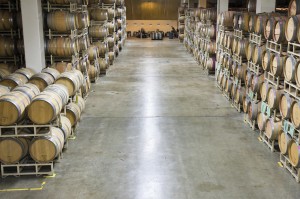 Even with today’s modern warehouse management technology there are still many warehouse operations with manually driven planning, operational and management tasks. The questions for businesses with a manual warehouse are however, how many tasks do you complete each day and week, how much planning and execution time do you use doing things manually and what is the return on investment if your systems calculated, distributed and helped control the execution of these tasks for you? Without understanding this, you could be spending a lot more money than you need to – even when you think your operations are well controlled and there is no room for improvement.
Even with today’s modern warehouse management technology there are still many warehouse operations with manually driven planning, operational and management tasks. The questions for businesses with a manual warehouse are however, how many tasks do you complete each day and week, how much planning and execution time do you use doing things manually and what is the return on investment if your systems calculated, distributed and helped control the execution of these tasks for you? Without understanding this, you could be spending a lot more money than you need to – even when you think your operations are well controlled and there is no room for improvement.
1. How many tasks do you manually plan and control?
Are you even aware of the number of manual tasks and the time it takes to complete these in order to manage and control your operation? These tasks can be varied, even when you have a warehouse system in place. Taking goods receipt on its own these can include:
- Inbound receipt timeslot planning and operational management of these manually developed plans
- Planning and controlling work order transfers from manufacturing operations
- Physical counting and logging of goods receipts e.g. where your operation has no system based process, or managing unexpected deliveries or exceptions, or being unable to match inbound receipts with ERP delivery numbers, or handling delivery non-conformity, or prioritising deliveries based on real time demand and supply, etc.
- Pallet label application processes
- Deciding where best to move goods receipted stock e.g. straight to picking locations, reserves or deep reserves, special storage areas such as hazardous or temperature controlled areas, block stacking or just-in-time marshalling or sortation areas etc.
- Timing of when to move goods receipt stock e.g. to clear receiving docks, to help picking, stock movement and despatch productivity, to balance workload within a warehouse, etc
- Managing the best use of resources e.g. from labour to trucks
- Re-palletising stock e.g. moving stock from broken to sturdy pallets or other containers, or re-palletising when inbound pallet sizes differ from those used in warehouse racking, etc
- Knowing when, where and how to move goods receipt stock when it is not normal stock e.g. for new lines that are not set up on the warehouse system with the correct weights, measures and other material master details, or knowing what to do with returned items, damages or “less than perfect” stock
- Understanding effects on the warehouse layout when new lines arrive?
Even if you were to make a list of all the manual tasks in your warehouse, how easy is it for you to account for the extra planning and execution time caused by all the work a good warehouse system can automate for you?
2. Penny wise and pound poor
Cutting budgets every year to save on labour, whilst hoping productivity improves is one thing. To then justify spending extra money on additional storage due to lack of warehouse space, or increasing distribution spending due to lower than required vehicle fill, is another issue entirely. Why does all this matter? Because if your warehouse systems cannot help you plan space effectively either within the warehouse or to fill vehicles you will be penny wise and pound poor. If you are reliant on manual processes alone to do this work for you, then as we have seen in many cases you could be spending far more money than you need to be. Taking this a stage further, looking at all the manual processes you do outside of your warehouse systems, how much extra planning and execution time do you use? How much extra budget do you require in your operation as a result?
This can be a difficult question to answer particularly if you’re starting this analysis for the first time. Listing all these processes and tasks however is a very good exercise to undertake because by doing so, you’ll identify many quick wins that will save time and money immediately. In some cases you may also improve customer service as a result too.
3. Listen, I don’t trust computer systems and believe there is always an element of manual work
Warehouse systems are there as an aid, to help improve business control. The trick is to have a system that:
- Eliminates as many manual planning and control processes whilst still adding value to your organisation, rather than removing or restricting added value
- Enabling your people to make the right manual decisions and take control to override the system e.g. from vehicle fill planning to requesting stock replenishment moves in line with real time picking
- Allows you to more easily understand where non-added value processes exist and gives you options to make productive changes
By looking at your manual tasks and analysing where you think a system could help, you’ll begin to build up a picture of where ROI can be in your organisation. If you also consider the money you spend on additional warehousing, vehicle fill and say overtime, as examples you might find ROI payback using a more flexible warehouse management system is faster than you think.
